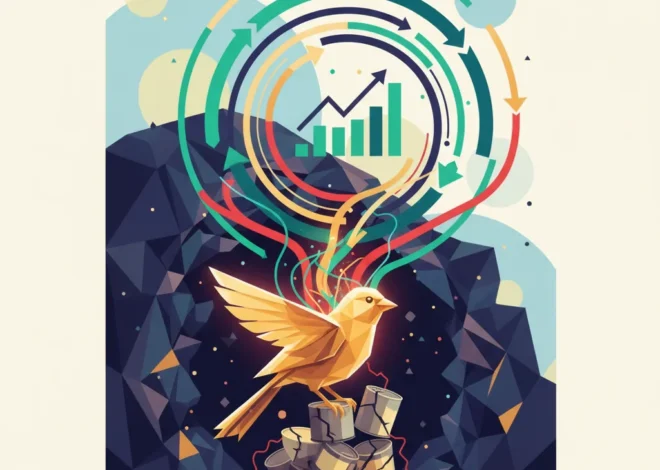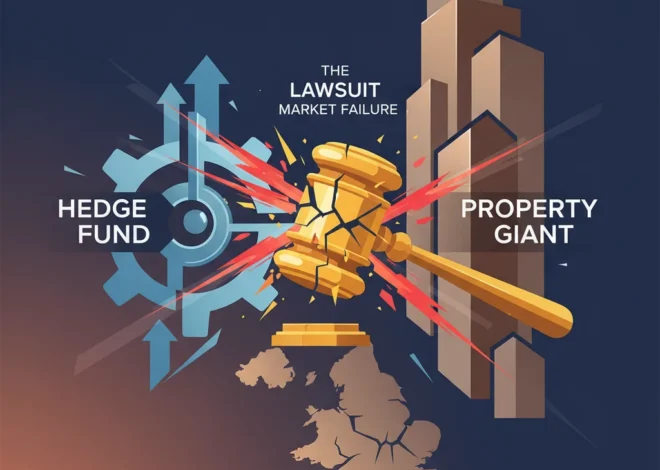
The Paradox of India’s Growth: Why a Booming Economy is Begging for a Spending Spree
India’s economy presents a fascinating and complex picture. On one hand, it’s a beacon of growth in a sluggish global landscape, posting headline-grabbing GDP numbers that make it the envy of nations worldwide. The stock market is buoyant, and investor sentiment, at a glance, appears robust. Yet, beneath this shimmering surface lies a curious paradox: the very engine of a capitalist economy—the private sector—is hitting the brakes. Instead of reinvesting profits into new factories, technologies, and jobs, Indian companies are sitting on cash, and they have a surprising request for the government: you spend first.
This counterintuitive plea from India’s corporate leaders for increased public expenditure reveals deep-seated concerns about the sustainability of the current growth model. It highlights a critical disconnect between macroeconomic figures and the reality of consumer demand on the ground. As India stands at a crucial economic crossroads, the debate between fiscal stimulus and fiscal discipline has never been more pertinent. In this analysis, we will delve into the reasons behind the private sector’s hesitation, the government’s difficult balancing act, and what this all means for the future of finance, investing, and the Indian economy.
The Glimmering Facade of 8% Growth
To understand the current predicament, one must first appreciate the scale of India’s recent success. The nation’s economy has been on a tear, expanding by a staggering 8.4% in the final quarter of 2023, far exceeding the expectations of most economists. This remarkable performance has solidified India’s position as the world’s fastest-growing major economy, a title it has held with pride. This growth has been largely powered by two key drivers: robust service sector activity and a significant push in government capital expenditure (capex).
For investors, both domestic and international, these figures have been music to their ears. The Indian stock market has reflected this optimism, reaching record highs and attracting significant capital inflows. The narrative is compelling: a young, dynamic population, a government focused on reforms, and a burgeoning digital infrastructure create a fertile ground for long-term investing. However, the foundation of sustained economic prosperity rests on a multi-engine growth model, and right now, one of its most crucial engines—private investment—is sputtering.
Cracks Beneath the Surface: Why Companies Are Cautious
Despite the stellar GDP numbers, private sector capex has failed to launch. The gross fixed capital formation, a key indicator of investment, shows that private investment as a share of GDP remains below pre-pandemic levels. The primary reason for this corporate caution can be summarized in two words: weak consumption.
The high-frequency data reveals a K-shaped recovery, where the urban, affluent population is spending, but the broader, particularly rural, consumer base is struggling. Sluggish wage growth in the hinterlands, coupled with unpredictable climate patterns affecting agricultural income, has dampened demand for everything from fast-moving consumer goods to two-wheelers and tractors. Companies see little incentive to build new production lines when their existing capacity is not being fully utilized. They are, quite rationally, choosing to preserve cash, pay down debt, or reward shareholders rather than making bold, long-term bets on future demand.
This disparity is clearly visible when comparing the government’s role in the economy versus that of the private sector. The table below illustrates the recent trends in capital expenditure.
| Fiscal Year | Government Capex Growth (YoY %) | Private Sector Investment Trend | Key Economic Driver |
|---|---|---|---|
| FY22 | ~35% | Modest Recovery | Post-COVID Rebound & Government Spending |
| FY23 | ~29% | Stagnant / Cautious | Sustained Government Infrastructure Push |
| FY24 (Est.) | ~28% | Lagging Growth | Heavy Reliance on Public Capex |
| FY25 (Interim Budget) | ~11% | Uncertain / Waiting for Demand | Shift Towards Fiscal Consolidation |
As the table shows, government spending has been the primary pillar supporting investment-led growth. The private sector’s reluctance to take the baton is the central challenge facing policymakers today. Grounded Nation: How Airport Chaos Reveals Deep Fissures in the US Economy
The Unconventional Plea: A Call for State-Led Stimulus
This is the context for the recent, assertive call to action from the Confederation of Indian Industry (CII), one of the country’s leading business associations. In a direct appeal to the government, the CII has urged policymakers to increase capex by a substantial 25% in the upcoming fiscal year. Sanjiv Puri, the president of the CII, suggested that the government should “recalibrate the glide path of fiscal consolidation” to make room for this spending.
The logic behind this request is rooted in Keynesian economics. The argument is that government spending on infrastructure—building roads, ports, railways, and digital networks—has a high multiplier effect. It creates jobs for semi-skilled and unskilled labor, puts money directly into the hands of people who are likely to spend it, and thus stimulates grassroots consumer demand. This, in turn, is expected to boost corporate sales and profits, giving businesses the confidence to finally unlock their own investment plans. In essence, the private sector is asking the government to “crowd in” private investment by first creating a more robust demand environment.
However, this path is not without risk. Over-reliance on public spending can lead to inefficiencies, higher national debt, and potential inflationary pressures. The crucial question for the new government will be whether it can deploy this capital effectively to create a self-sustaining cycle of private investment and consumption, or if it will simply be a temporary fix. My prediction? We’ll see a ‘middle path’ budget—one that slightly increases the capex outlay from the interim budget’s proposal but stops short of the CII’s 25% ask, signaling a continued, albeit more flexible, commitment to fiscal prudence. The era of 30%+ public capex growth is likely over.
The Government’s Dilemma: Fiscal Prudence vs. Economic Fuel
The Indian government, under Prime Minister Narendra Modi, finds itself in a tight spot. For the past few years, a core tenet of its economic policy has been fiscal consolidation—a disciplined approach to reducing the budget deficit. The stated goal is to bring the fiscal deficit down from 5.8% of GDP to 5.1% in the current fiscal year, with a medium-term target of 4.5%.
This focus on fiscal health is critical for long-term economic stability. A lower deficit helps keep inflation in check, maintains the confidence of international credit rating agencies, and makes the country’s bonds more attractive to foreign investors. It signals responsible governance and sound financial management, which are essential for a stable banking system and a predictable finance environment. Abandoning this “glide path” to accommodate the private sector’s demands could be perceived as fiscally irresponsible, potentially leading to higher borrowing costs and currency volatility.
Therefore, the government must perform a delicate balancing act. Spending too little risks choking the nascent recovery in demand and leaving the economy overly dependent on a few growth drivers. Spending too much risks undoing years of hard work on fiscal consolidation and spooking international markets. High Stakes: Are UK Betting Firms Bluffing on Tax Hikes?
The Role of FinTech and Modern Banking in Bridging the Gap
While the debate often centers on government spending, the role of financial technology and the banking sector cannot be overlooked. India’s digital public infrastructure, including the Unified Payments Interface (UPI), has been revolutionary. This fintech ecosystem offers potential solutions to the consumption puzzle.
Leveraging financial technology can help extend credit to rural consumers and small businesses more efficiently than ever before. Data analytics can enable lenders to assess creditworthiness without relying on traditional credit histories, unlocking capital for those who need it most. The banking sector has a crucial role to play by ensuring that credit growth is robust and directed towards productive sectors of the economy. A healthy flow of credit is the lifeblood of economic activity, enabling both consumption and investment. Some have even floated ideas of using emerging technologies like blockchain to ensure transparency and efficiency in the disbursement of funds for large-scale infrastructure projects, minimizing leaks and maximizing impact.
Implications for Investors and the Road Ahead
For anyone involved in investing or trading in the Indian market, the government’s upcoming full budget will be a watershed moment. The policy choices made will have significant ramifications across various sectors.
- Infrastructure and Capital Goods: A decision to heed the CII’s call and boost capex would be a major tailwind for companies in construction, cement, steel, and capital goods. These sectors would be the direct beneficiaries of increased government orders.
- Consumer Goods: The performance of consumer-facing stocks hinges on a revival in mass-market demand. Investors will be watching for signs that the benefits of growth are becoming more broad-based. Until then, consumer discretionary stocks may continue to underperform.
- Banking and Finance: The financial sector’s health is tied to the broader economy. A sustained growth recovery would lead to better credit uptake and lower non-performing assets. A focus on fiscal discipline would be a positive for bond markets and financial stability.
Ultimately, the long-term trajectory of the Indian economy depends on its ability to transition from a state-led growth model to one driven by a vibrant, confident, and investing private sector. The current situation is a critical test of this transition. The Billion-Dollar Blind Spot: Why the McDonald's Harassment Scandal is a Wake-Up Call for Investors
Conclusion: A High-Stakes Balancing Act
India’s economic narrative is at a pivotal juncture. The dazzling headline growth masks an underlying fragility in private sector confidence and consumer demand. The unusual plea from corporate India for the government to prime the pump with more spending underscores the depth of this challenge. The government now faces a monumental choice between adhering to its path of fiscal consolidation and injecting a fresh dose of stimulus to reinvigorate the economy’s animal spirits. The decision it makes in the coming months will not only shape India’s economic trajectory for the next five years but will also determine whether the nation can truly unlock its immense potential and build a foundation for sustainable, broad-based prosperity.


